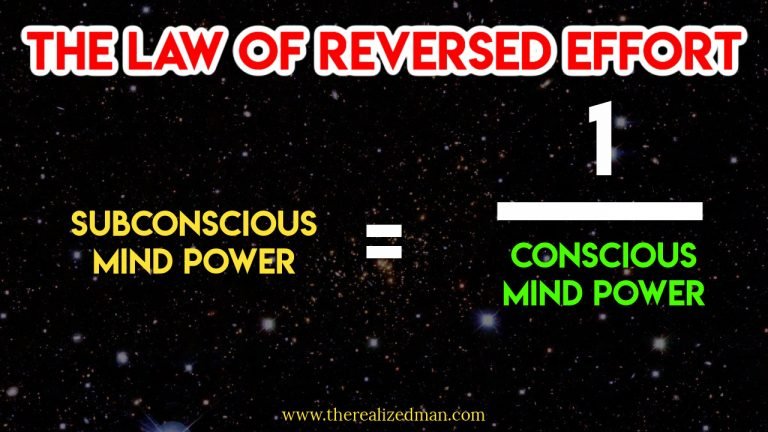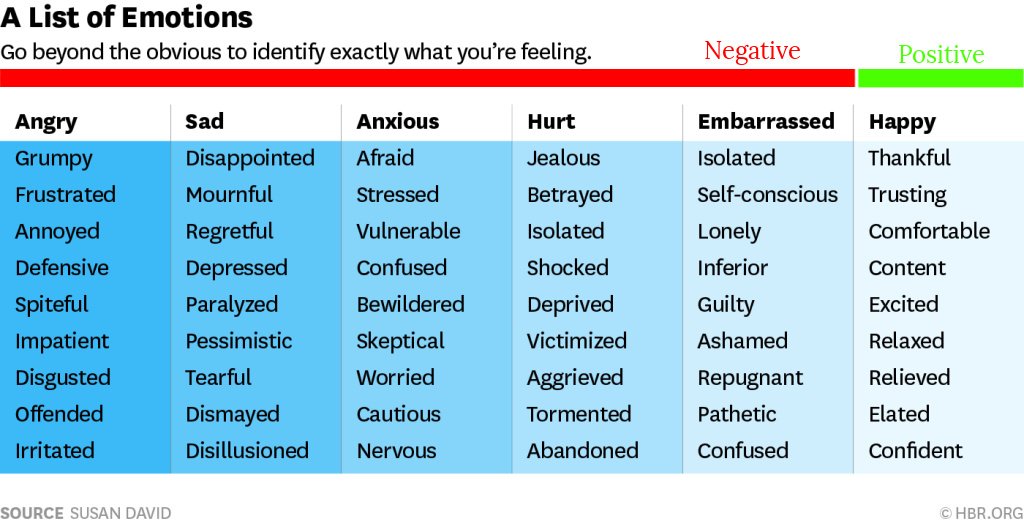How To Train Your Subconscious Mind
The subconscious mind, like a muscle, must be trained to be used effectively. The internet is filled with different workouts for your biceps, chest, etc, but hardly anything to help you utilize your subconscious mind. This article is the first of its kind, with original exercises you can do every day to access the full potential of your mind.
Train Your Subconscious Before Sleep
The alarm clock method
Our bodies have an internal clock called a ‘Circadian Rhythm’. This natural system has been designed to regulate our feelings of wakefulness and sleepiness over a period of approximately 24 hours.
According to the Sleep Foundation Organization,
“The circadian rhythms throughout the body are connected to a master clock, sometimes referred to as the circadian pacemaker, located in the brain. Specifically, it is found in the suprachiasmatic nucleus (SCN), which is in a part of the brain called the hypothalamus. At different times of the day, clock genes in the SCN send signals to regulate activity throughout the body.”
Your mind is the ultimate timekeeper.
An effective way to train your subconscious mind is through setting an intention before you go to sleep to wake up at a particular time.
If you usually wake up at 9AM with an alarm clock, set the intention to wake up at 8:30AM.
Your mind will wake you at or close to that exact time.
If you are unable to do this on the first attempt, keep trying until you can regularly wake up at your set time without the alarm clock.
This exercise is best done on days when you have no obligations (for most people this will be on weekends). It’s better because you might wake up much earlier than you intended or sleep past your designated time.
You can choose to practice this method every day and set your alarm clock as a backup. However, the method tends to be more effective when you don’t have an alarm clock. That way you can rely solely on your subconscious intention to wake you up. Setting an alarm tends to register in your brain as a limit, so you tend to sleep until it rings.
The music recall method
Having a song stuck in your head can be frustrating, especially if you don’t remember the name of the song, the artist’s name, or the lyrics. This nightmare situation happened to me and my girlfriend. A song kept haunting us for hours, and no matter what we did, we couldn’t remember its name.
We decided to do an experiment; we both set the intention to remember the name of the song before going to sleep.
In the morning, I woke up and found myself humming a different segment of the song which I had forgotten the day before. My girlfriend, upon hearing this, automatically said,
“IT’S THE HAMSTER DANCE SONG!”
A quick Google search allowed us to find the song which had been lost to us for years. Yes, it was indeed called ‘The Hamster Dance Song’.
This experience gave me a new idea for training the subconscious mind.
Do this exercise one hour before you go to sleep.
You will need to find a song that fits at least one of two criteria – you don’t know the name of the song OR the name of the artist/band that composed the song.
A song you would have listened to 15 or more years ago would be preferable for this exercise.
A good way of finding these songs is by going through an old iPod or finding a playlist on YouTube of hit songs from the early 2000s, 90s, 80s, etc (depending on how old you are).
Play the song without looking at its name.
Try to consciously remember the name of the band or song.
If you can’t remember these details, this song will be a good tool for the exercise.
Before sleeping set the intention to remember the details of the song the next day.
The next day you will likely remember them.
If you are unable to remember the details, set the same intention again for a second night.
If it still doesn’t work, then it’s possible:
- You never actually paid attention to the details of the song in the past (unlikely).
- You need more practice with the method (likely).
- The details will come to you at a later date (likely).
The more you practice setting an intention for your mind, the better you will be at receiving the information you request.
Face Recall Method
This method is similar to the music recall but uses people’s faces as the basis of the intention. To do this exercise you will need some old photos. The best photos to use are old class photos from high school or primary school.
Find a person whose face you recognize but name you’ve forgotten (ideally someone of whom you have memories). Make sure you don’t look at the names written at the bottom of the photos.
You can also find people on Facebook. Just look for a picture that has familiar faces with tags. Don’t look at the tags, just pick a face you remember.
Look at the face 1 hour before going to sleep, and then set the intention to remember the name the next day.
Just like the last exercise you will likely remember the person’s name.
When you are confident you have the right name, you can check it in the photo album or the Facebook tag.
The great thing about this exercise is you can do it as many times as you want.
Each time you will be strengthening your ability to communicate a request to your subconscious mind.
How does the subconscious mind work
In the book ‘The Genie Within’, Harry Carpenter mentions the Law of Reversed Effort. It is a concept which describes a phenomena you find familiar. Have you ever tried remembering something, but when you consciously looked for the answer couldn’t find it? Two hours later when you were doing something completely different the answer came back to you like a lightning bolt!
To master your subconscious mind, you must understand it does not work the same as your conscious mind. When we use our conscious minds, we tend to be forceful (do a mental calculation like 23 x 45 to see how this works). So we expand lots of energy in this process. The subconscious mind, however, requires we let go rather than ruminate on problems. Doing this allows the conscious mind to let the subconscious take over.
You can’t have both minds working on a problem with the same capacity at the same time. Also, you can’t be reactive whilst simultaneously being focused and analytical. When we learn something new like driving a manual car, our conscious mind is heavily used. The conscious mind can process only a few bits of data at any given time. This is why it’s incredibly difficult to drive smoothly when we start (there are just too many variables to register). The more we drive, certain tasks are then delegated to the subconscious. This makes it easier for us to drive while doing other things (such as debating with passengers).
So what does this tell us? Next time you forget your pin at the ATM, don’t consciously try to force yourself to remember the numbers. Relax, let your fingers move by themselves and you will get it. The Law of Reversed Effort says the more energy you put towards your conscious mind, the less will be available to your subconscious. The more you put towards your subconscious, the less will be directed to your conscious mind. Think of the dream state which is almost 100% subconscious with low conscious awareness. Mastering your subconscious is about learning to trust your ability to get the answers you seek.

How to get answers from your subconscious for complex problems
Friedrich A Kekulé was a German organic chemist who studied the structure of Benzene.
The problem frustrated him for years as he could not arrive at an acceptable scientific conclusion for how the carbon atoms bonded together in the chemical.
According to Friedrich, whilst working on the problem one night, he fell asleep in front of his fireplace.
He dreamt of a snake chasing its own tail and then eating itself whilst rotating. This vision was the ancient symbol called the Ouroboros, which is symbolic of the cyclical nature of life, birth, death, and infinity.
Friedrich awoke suddenly and had an aha moment. He got the idea the carbon atoms in benzene were arranged in a ring structure similar to the vision he had in his dream.
His idea turned out to be correct, and he would later win the Noble Prize for it.
This story is one of many of the amazing breakthroughs that have come through the subconscious mind when the conscious mind is quiet.
If you are looking for an in-depth strategy to get answers for more complicated problems, read the article ‘How to get answers from your subconscious mind’.
Subconscious Visualization Technique
Visualization is one of the most effective ways to train your subconscious mind.
The method is effective because our minds have a hard time distinguishing between what is real and what is imagined. We easily fall into trances which make things that are fictional appear real. Consider the times you watched a very engaging horror film. Consciously, you knew you were in a cinema watching images projected onto a screen, but subconsciously you felt the characters’ emotions as if you were there.
How about dreams? How many times have you awoken from a nightmare in a sweat with your heart thumping? Even when you reflect on memories you hold dear, a part of you feels the same emotions you felt during that moment.
You have experienced all of these things in a reactive manner; however, you likely have not consciously orchestrated your visualizations to help you achieve specific goals.
The effectiveness of visualization has been shown in various studies. One study tested 3 groups of pianists on their ability to play a short unfamiliar piece. One group practiced playing the piece mentally, the second group physically practiced, while the third group had no practice.
The groups had two 7-minute sessions to practice playing the piece and were assessed after each session. The physical group performed the best by making the least errors, followed by the group which used purely visualization, and then the control. The study shows that with just 14 minutes of mental rehearsal we can train our subconscious minds to perform better than without the mental training.
Visualization has been widely used by many top sporting coaches such as Bob Bowman, who was 28-time Olympian medallist Michael-Phelps’ coach. Bowman says,
It has to be rehearsed many, many times…By the time Michael gets up on the blocks to swim in the World Championships or Olympics, he’s swum that race hundreds of times in his mind before he gets up there.”
If Michael Phelps could use visualization to help him become the most decorated Olympian ever, you can implement it in your life to achieve your goals.

How To Use Visualization To Reprogram Your Subconscious Mind
- Get relaxed
To effectively influence your subconscious mind you will need to be relaxed. When the mind is relaxed, the conscious ‘monkey mind’ can calm down and you can better focus on your visualization. To help relax do some deep breaths while being mindful of your whole body. Listening to meditative music, white noise or binaural beats might help to calm the mind.
- Visualize the actions
Don’t visualize the goal achieved, rather the process of achieving it. If you are working on quitting cigarettes, you would visualize yourself getting the urge to smoke and simply ignoring it by focusing on your feet. If you are working on losing weight, you would visualize yourself making a healthy dinner and getting your gym bag ready for a workout.
- Increase the modalities
Modalities are how we experience the world (think of your five senses). We have visual, auditory, kinaesthetic, olfactory, and gustatory modalities. When we visualize, we tend to start with the visual representation because it’s our strongest sense. To make the visualization more real, incorporate sound, feelings, and other senses. You want to immerse yourself in the visualization as if it were a dream. The more you practice visualization, the better and more real it will become.
- Repeat the visualization
Once you have a good sequence, repeat it as much as possible. The more times you repeat the mental sequence, the more ingrained it will be in your mind. Once ingrained it becomes easier to execute the right actions when necessary. The subconscious mind is the habit mind, and your mental habits work in exactly the same way as your physical habits.
How To Train Your Subconscious Mind To Be Positive
The way we think is largely shaped and moulded by our words. To prime our brains for positivity and success, we must remove the words we habitually say to ourselves which lead to self-sabotage and negative emotions.
One of the most potent words of destruction is ‘try’. When we say to ourselves:
- I will try go to the gym today.
- I will try stick to my diet.
- I’m going to try to quit smoking.
- I’m going to try make the business successful.
- I will try make it on time.
We are basically telling ourselves we are ‘not’ going to do these things.
Try implies an attempt.
On matters that are entirely in our control you don’t need an attempt. You should be thinking in terms of execution.
During the critical hour when we have to do the thing we said we would ‘try’, we will have a reliable excuse for not doing it (we never committed).
Each time you catch yourself saying a destructive word like ‘try’ or ‘should’, replace it with a constructive phrase like ‘I will’ or ‘I’m working on’. Each time you rephrase the sentence you affirm to yourself that you are a person of action. That is how you reprogram your subconscious to habitually think in this way.
The English language has more words to describe negative emotions than positive ones, so it’s no wonder most people’s default mode of operation is being disengaged.

Your language forms the building blocks of your thinking. It’s your responsibility to choose the right blocks for your goals.
Training your subconscious to be more positive is an extensive topic which will require its own article.
You have a hidden superpower and it is your subconscious mind. To use it effectively you must convince it to be on your team. Use the strategies listed in this article to finally achieve lasting success in your life.
Do this and I promise you will be one step closer to living and dying well.
